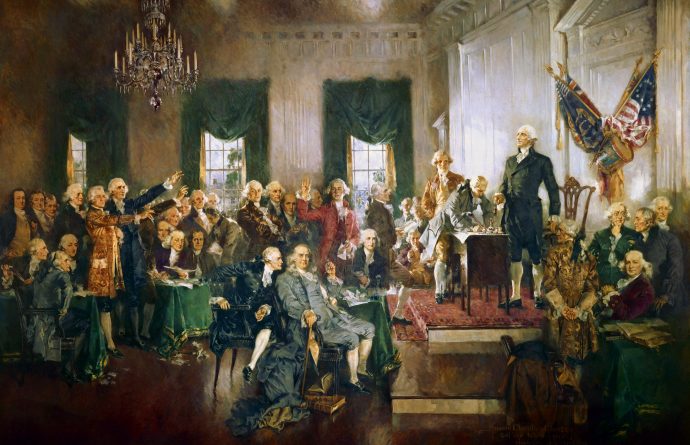Here is Jane Hampton Cook writing at The Federalist:
Today is Constitution Day. Here’s what the Founders’ path to writing the Constitution can teach us about how to accomplish our typically much humbler pursuits.
Let’s face it: sometimes history seems irrelevant. We’re living in a modern technological wonderland of smart phones, Direct TV on airplanes, and online shopping. Yet what makes history both relevant and intriguing is the humanity behind it: the universal qualities and daily life applications that we can discover in the past.
So it is with the behind-the-scenes story of drafting the U.S. Constitution in 1787, which we mark every year on September 17 as Constitution Day. If we look back, we find that James Madison’s problem-solving skills are as applicable and useful today as they were back then.
1. Define the Problem
After the Revolutionary War, the United States operated under the Articles of Confederation. But U.S. leaders soon realized these lacked the power to create something as essential as a common U.S. currency and regulate trade between states (among many other problems).
What to do? American statesman and future president James Madison, who lived at Montpelier (now a must-see museum in Virginia), decided to problem-solve by researching some options.
2. Research Your Options
First, Madison read numerous books on government—including 13 volumes of political history and 11 volumes on the history of humanity. In this way, he “Googled” his way through the topic of government.
3. Figure Out What Works
Madison then considered what had and hadn’t worked in other countries and civilizations. Just as modern business leaders do today, he analyzed best and worst practices and applied them to the context and principles of American independence.
Realizing that the Articles were too weak to merely be tweaked, Madison envisioned a new Constitution based on three branches of government: “I have sought for some middle ground . . . I would propose as the groundwork that a change be made in the principle of representation,” he concluded.
Read more: The Federalist
Image credit: Painting by Howard Chandler Christy (1873–1952) / Photograph of the painting — The Indian Reporter at Wikipedia.

